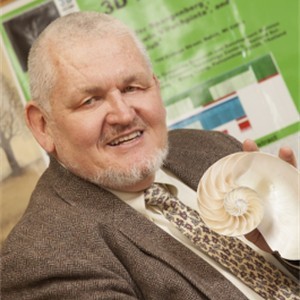
John R. Jungck
Resources and Links
Education
- B.S. - University of Minnesota: Biochemistry and Mathematics
- M.S. - University of Minnesota: Genetics, Microbiology
- Ph.D. - University of Miami: Evolution, Molecular and Cellular Biology
- D.Sc. honoris causa - University of Minnesota
Teaching
- BISC 467: Evolutionary Bioinformatics
- HONORS: East:West
- HONORS: Ethnomathematics: Art, Culture, and Social Justice
- MALS: East: West
- MALS: Bauhaus, Bucky, and Black Mountain College: Designing Futures
Research Interests
I am a theoretical biologist who specializes in molecular evolution, evolutionary bioinformatics, image analysis, and mathematical biology education. My interests are deeply involved with various aspects of promoting interdisciplinary work: science, technology, and society; history, philosophy, and social studies of biology; art and science (STEAM – putting art in Science, Technology, Engineering, and Mathematics); numeracy (quantitative reasoning); Citizen Science and Participatory Democracy; international collaboration (International Union of Biological Sciences); mathematics and science education (PBL, collaborative learning, open ended investigations, strategic simulations for learning long-term strategies of research, problem solving, interdisciplinary education, progressive cyberlearning); and, promoting diversity and student retention. I was the co-founder of the BioQUEST Curriculum Consortium.
Current Projects
Professor Jungck is currently focusing on completing two books: “A BioGraphy of Life: Modeling Biology with Dots and Lines” and “Math Saves Lives: Cancer and Evolution” As well as co-editing a special issue of the Bulletin of Mathematical Biologythat will appear in 2020. His research on topological analysis of 3D nanotomorgapghic images of radiolaria with Professor Wagner continues as does his work on 4D printing (self-asssembly) of viral capsid models with mathematics Professor Hannah Hignlander at the University of Portland.
Research Group
Rama Viswanathan, Beloit College (graph theory, computer science)
Noppadon Khiripet, NECTEC (Bangkok, Thailand) (graph theory, computer science)
Roger Wagner, University of Delaware (histologist, microscopist)
Anton Weinstein, Truman State University (population genetics, bioinformatics)
Vince Streif, University of Wisconsin Madison (graph theory, computer science)
Sijia Liang and Yang Yang, University of Minnesota (statistics)
Peter Lockhart, Massey University (New Zealand) (molecular evolution)
Peter Biro, Centre for Ecological Research, Balaton Limnological Institute, Hungarian Academy of Sciences (community ecology)
Kristin Jenkins, University of Wisconsin Madison; Stacey Kiser, Lane Community College (Oregon); Ethel Stanley, Three Rivers Community College (Missouri); and Sam Donovan (University of Pittsbugh) (BioQUEST Curriculum Consortium)

